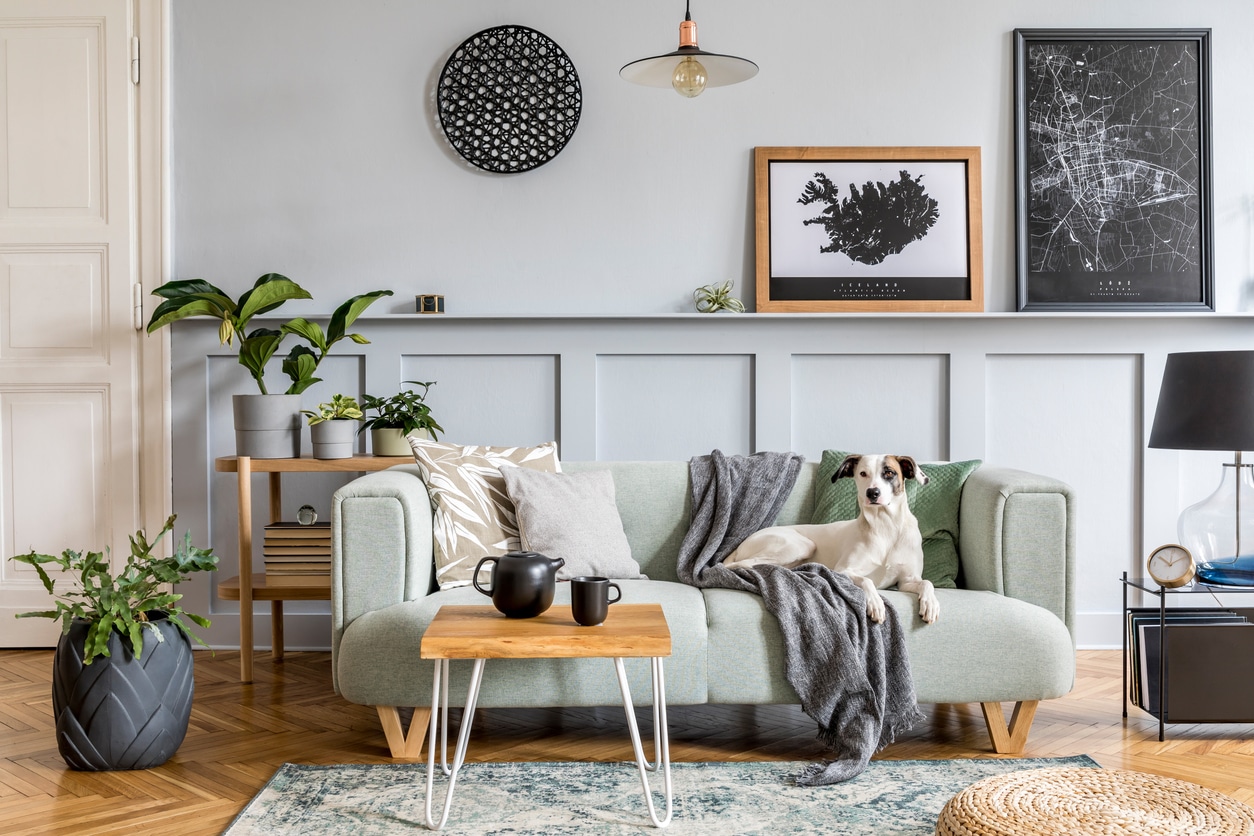Classic interior design is enduring. It creates spaces that feel calm, balanced, and timeless. Whether you’re restoring a period property or adding character to a modern home, you can achieve a classic aesthetic using modern paint colours, without sacrificing tradition or quality.
At Alan Cox Decorating, we help homeowners achieve sophisticated, traditional interiors through professional decorating techniques and thoughtful colour selection. This guide outlines how to use today’s paint colour trends to create classic, elegant interiors that stand the test of time.

What Makes a Space Feel Classic?
A classic interior draws from architectural balance, subtle detail, and refined colour schemes. It often includes symmetrical layouts, painted trims, and understated tones. While the structure of a home contributes to this look, it’s the decorating choices that bring it all together.
Common elements of classic decorating:
- Neutral or muted colour palettes
- Defined trim and woodwork
- Painted panelling or mouldings
- Clean, sharp lines and quality finishes
By combining these elements with modern paints and techniques, you can create a timeless atmosphere that feels both current and authentic.
Selecting Modern Colours with Traditional Appeal
Modern decorating doesn’t mean bright or bold. Many contemporary colours draw inspiration from historical palettes, soft, chalky tones with depth and warmth. These colours bring subtlety and elegance, making them perfect for classic-inspired spaces.
1. Warm Neutrals
Soft, warm neutrals add comfort and flexibility to a room. They offer a subtle backdrop that pairs well with painted woodwork and classic features like coving or panelling.
- Ideal for living rooms, bedrooms, and hallways
- Complements both traditional and modern interiors
2. Muted Blues and Greens
Softer tones of blue and green evoke a heritage feel without overpowering the room. They suit classic interiors, offering calmness and depth, especially in natural light.
- Suitable for bathrooms, studies, and kitchens
- Works well with white or off-white trims
3. Earthy and Natural Tones
Tones inspired by natural materials, such as stone, clay, or olive, give a grounded, traditional feel while reflecting modern colour sensibilities.
- Ideal for dining rooms, entrance halls, or spaces with period features
- Pairs well with timber flooring and painted woodwork
4. Updated Whites and Off-Whites
Whites with subtle undertones (warm or cool) avoid the starkness of brilliant white. These are ideal for ceilings, trims, or entire rooms where a light, clean look is desired without feeling clinical.
- Excellent for ceilings, small spaces, and woodwork
- Can make architectural details feel more refined
Where and How to Apply Colour for a Classic Finish
It’s not just about the colour you choose, but how and where you apply it. Thoughtful placement and professional application can dramatically impact the final look.
Painted Panelling and Half Walls
Wall panelling, whether original or created with MDF, adds structure and traditional charm. Painting this feature in a complementary tone or finish enhances the period feel of the room.
Tip: Try painting the lower portion of the wall in a deeper tone, with a lighter colour above to create contrast and height.
Defined Skirting and Trim
Classic interiors typically include clearly defined trims. Painting skirting boards, door frames, picture rails, and cornices in either a matching or slightly contrasting tone adds depth and sophistication.
Professional recommendation: Use a durable satin or eggshell finish for trims to ensure longevity and subtle sheen.
Two-Tone Ceilings and Walls
While ceilings are often painted white by default, a classic look can be achieved by choosing a soft off-white or light tonal variation of the wall colour. This can add warmth and cohesion, especially in spaces with period detailing.
Use in: Hallways, lounges, and bedrooms with high ceilings or coving
Decorating Techniques That Support a Classic Aesthetic
Applying paint correctly and using the right finish makes a significant difference. Even modern paints can reflect tradition when used with care and attention to detail.
Flawless Surface Preparation
A smooth surface is essential for a classic finish. Any imperfections, cracks, uneven filler, or previous brush marks, will be noticeable under matt or low-sheen paints.
Preparation checklist:
- Sand and clean all surfaces
- Fill and smooth any cracks or gaps
- Prime appropriately for consistent finish
Precision Cutting-In
Classic interiors rely on clean lines and sharp transitions between walls, ceilings, and trim. This is achieved through accurate cutting-in, which separates colours and defines the edges with precision.
Professional benefit: It takes experience and the right tools to achieve razor-sharp lines that look crisp and deliberate.
Finish Matters
For a traditional look:
- Use matt or flat emulsion for walls to reduce reflection and give a chalky, elegant effect
- Choose satin or eggshell for woodwork to offer durability without excessive shine
These finishes are typical of classic interiors and feel refined when professionally applied.
Room-by-Room Suggestions
Living Room
- Use soft taupe, warm grey, or muted green
- Define trims and alcoves with contrasting or tonal colours
- Incorporate panelling or a painted fireplace surround if possible
Bedroom
- Apply gentle, restful tones like cream, dusty blue, or soft clay
- Keep ceilings and trims in off-white for a restful transition
- Consider painted wardrobes or built-in units to maintain harmony
Kitchen
- Try two-tone walls or painted wall panelling
- Paint cupboards or trims in classic shades to add interest
- Use washable finishes for practicality with style
Hallway and Landing
- Introduce contrast with darker lower walls and light above
- Define stair spindles and rails with careful colour separation
- Make use of natural light to enhance subtle colour choices
Why Professional Decorating Creates the Best Results
Even with the right colours and concepts, the finish is what makes a space feel truly classic. At Alan Cox Decorating, we focus on:
- Careful planning and preparation
- Precision in paint application
- Experience with a variety of finishes and surfaces
We’ve helped many clients achieve classic interiors with modern touches, using time-tested decorating practices that bring out the best in your property. Whether you live in a period home or want to introduce traditional features to a new space, professional decorating makes all the difference.
Final Thoughts
Creating a classic look with modern paint colours is entirely achievable with the right approach. Through carefully selected shades, quality finishes, and professional decorating techniques, you can introduce timeless elegance into any space—without compromising on freshness or practicality.
If you’re considering a decorating project and want expert advice or support in bringing a classic interior to life, contact Alan Cox Decorating today. We’re proud to offer trusted, professional painting and decorating services with a personal touch and proven experience.




